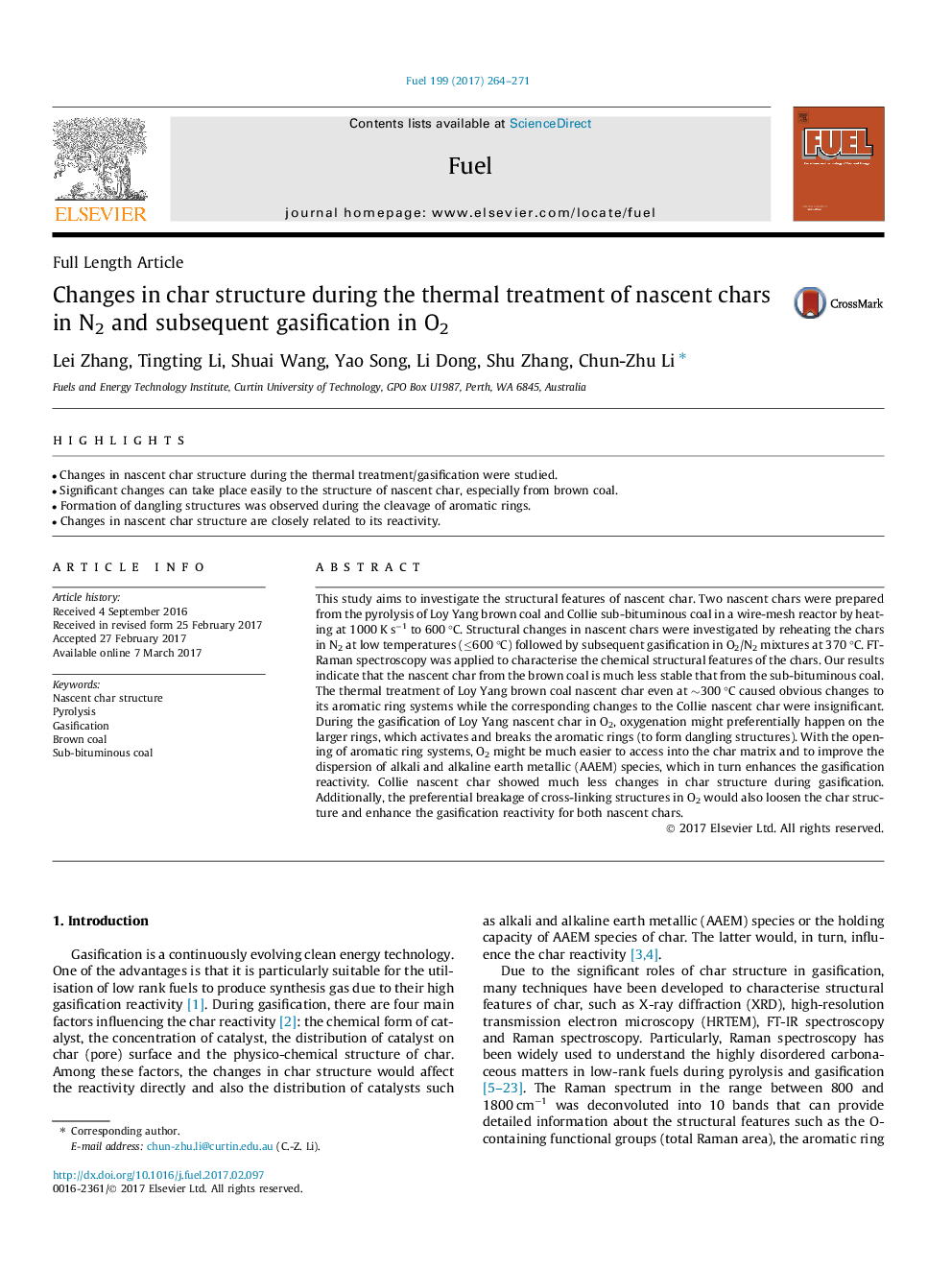| Article ID | Journal | Published Year | Pages | File Type |
|---|---|---|---|---|
| 6474754 | Fuel | 2017 | 8 Pages |
â¢Changes in nascent char structure during the thermal treatment/gasification were studied.â¢Significant changes can take place easily to the structure of nascent char, especially from brown coal.â¢Formation of dangling structures was observed during the cleavage of aromatic rings.â¢Changes in nascent char structure are closely related to its reactivity.
This study aims to investigate the structural features of nascent char. Two nascent chars were prepared from the pyrolysis of Loy Yang brown coal and Collie sub-bituminous coal in a wire-mesh reactor by heating at 1000 K sâ1 to 600 °C. Structural changes in nascent chars were investigated by reheating the chars in N2 at low temperatures (â¤600 °C) followed by subsequent gasification in O2/N2 mixtures at 370 °C. FT-Raman spectroscopy was applied to characterise the chemical structural features of the chars. Our results indicate that the nascent char from the brown coal is much less stable that from the sub-bituminous coal. The thermal treatment of Loy Yang brown coal nascent char even at â¼300 °C caused obvious changes to its aromatic ring systems while the corresponding changes to the Collie nascent char were insignificant. During the gasification of Loy Yang nascent char in O2, oxygenation might preferentially happen on the larger rings, which activates and breaks the aromatic rings (to form dangling structures). With the opening of aromatic ring systems, O2 might be much easier to access into the char matrix and to improve the dispersion of alkali and alkaline earth metallic (AAEM) species, which in turn enhances the gasification reactivity. Collie nascent char showed much less changes in char structure during gasification. Additionally, the preferential breakage of cross-linking structures in O2 would also loosen the char structure and enhance the gasification reactivity for both nascent chars.
